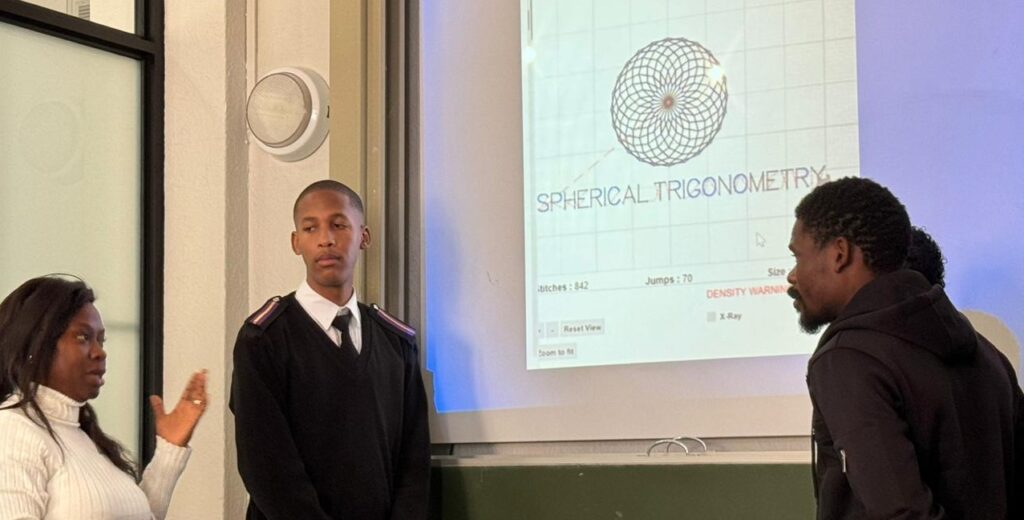A workshop held on 6 May 2024 at AIMS South Africa brought to light the practical side of spherical trigonometry. Marine Engineering students from the Cape Peninsula University of Technology (CPUT) participated in an interactive session where they applied their understanding of Napier’s rule to calculate the distance between two coordinates on a sphere, gaining valuable insights into navigation.
Using TurtleStitch, students devised an algorithm which they then deconstructed to comprehend the underlying mathematics before reconstructing it to understand the building blocks of algorithms. Their newfound expertise will be shared with other students in the nautical science programme. This workshop marked the first time AIMS South Africa used TurtleStitch in higher education mathematics.
The visit not only underscored the significance of interdisciplinary education between mathematics and engineering but also showcased the innovative prowess of our emerging marine engineers. The students’ leadership during the session demonstrated Africa’s remarkable potential and talent. This collaborative effort was made possible by Dr Sinobia Kenny from the African Institute for Mathematical Sciences (AIMS), and Dr Ekaterina Rzyankina and Dr Frikkie George from Cape Peninsula University of Technology, who all play pivotal roles in STEM education.
Dr Rzyankina remarked, “We didn’t just talk theory. We brought it to life through cutting-edge technology, integrating coding and a stitching machine to tangibly demonstrate these complex mathematical concepts. It was inspiring to see the engagement, and it sparked curiosity among the students as they saw the practical applications of their studies unfold right before their eyes.”
Dr Kenny added, “With younger learners, I’ve tried teaching the innovative TurtleStitch first and then the mathematics, but this time, with final-year undergraduate students, we started with the mathematics and then constructed algorithms.”
This exciting collaboration exemplifies how bridging theory and practical application can create a dynamic learning environment. Here’s to more partnerships that continue to integrate code and craft into education!




